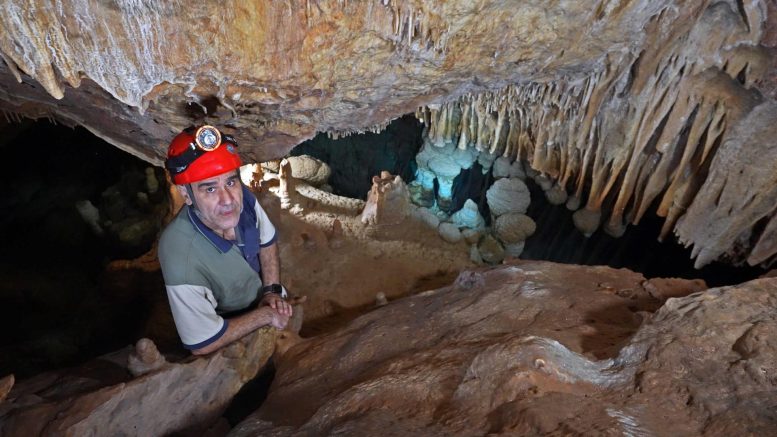
University of South Florida geologist Bogdan Onac stands next to preindustrial overgrowths in the Cala Varques cave in Mallorca, Spain. Credit: University of South Florida
A geology professor at the University of South Florida has uncovered the influence of the industrial boom on global warming.
The early 1900s were a thrilling moment for people all around the globe, with tremendous breakthroughs in the steel, electric, and car sectors. Industrial developments also represent a tipping point in our climate. The sea level has increased 18 centimeters (7 inches) since the beginning of the twentieth century, according to an international team of experts led by the University of South Florida (USF).
The research, which appeared on the cover of Science Advances on July 1, attempts to determine preindustrial sea levels and investigates the influence of present greenhouse warming on sea-level rise.
The team, which included graduate students from USF, headed to Mallorca, Spain, which has over 1,000 cave systems, some of which contain deposits that date back millions of years. They concentrated on deposits from 4,000 years ago to the present day for their investigation.
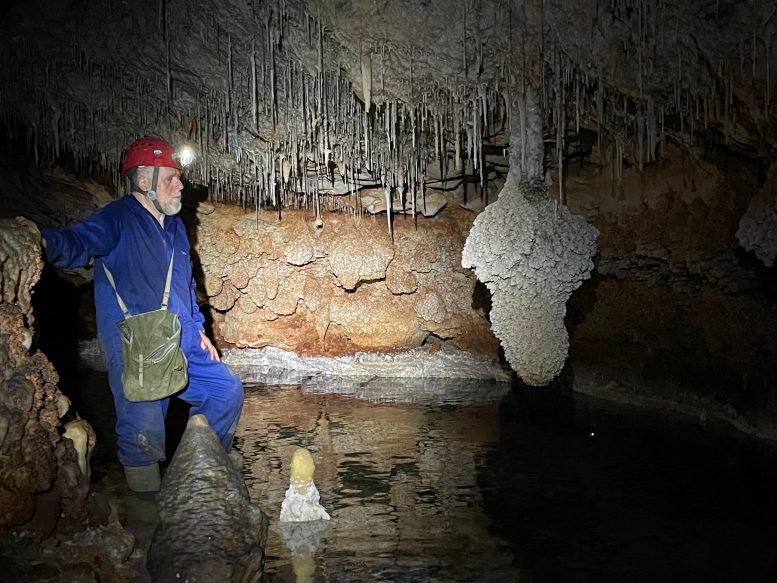
University of the Balearic Islands co-principal investigator stands next to a large mineral deposit in the Dets Ases cave in Mallorca, Spain. Credit: University of South Florida
The team found evidence of a previously unknown 20-centimeter (8-inch) sea-level rise that occurred nearly 3,200 years ago when ice caps melted naturally over the course of 400 years at a rate of 0.5 millimeters per year. Otherwise, despite major climatic events like the Medieval Warm Period and the Little Ice Age, the sea level remained exceptionally stable until 1900.
“The results reported in our study are alarming,” said lead author Bogdan P. Onac, a geology professor at USF. “The sea-level rise since the 1900s is unprecedented when compared to the natural change in ice volumes over the last 4,000 years. This implies that if global temperatures continue to rise, sea levels could eventually reach higher levels than scientists previously estimated.”
To create the timeline, the team gathered 13 samples from eight caves along the coastline of the Mediterranean Sea. The deposits are rare – only forming near the coastline in cave passages that were repeatedly flooded by seawater, making them accurate markers of sea-level changes over time. Each deposit holds valuable insight into both the past and future, helping researchers determine how quickly the sea level will rise in the coming decades and centuries.
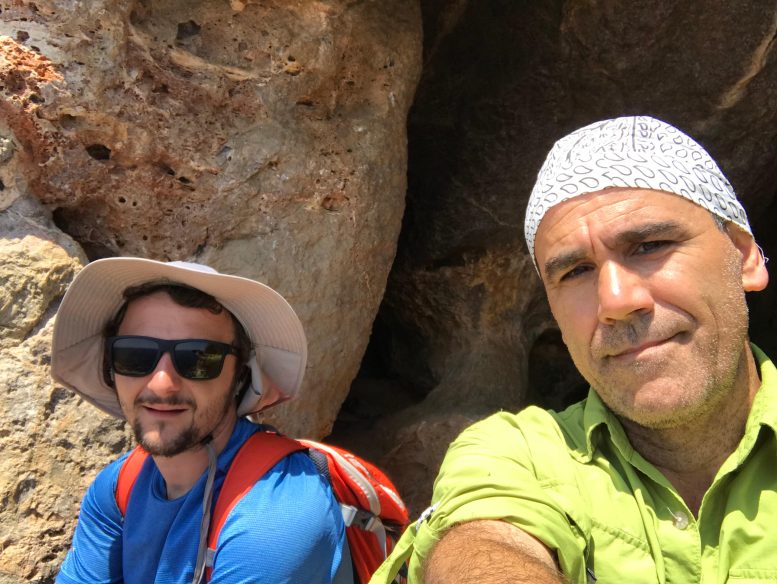
University of South Florida student Giuseppe Lucia and USF geologist Bogdan Onac. Credit: University of South Florida
The samples were taken to the University of New Mexico and the University of Bern in Switzerland, where special instruments were used to determine their age by a uranium-series method. Over time, uranium decays into other elements such as thorium and lead, allowing researchers to create a timeline of the sea level documented in each deposit.
A complex software at Harvard University helped generate predictions using various ice models and Earth’s parameters to showcase an accurate history of the sea level. These predictions are essential because they allow researchers to estimate past global mean sea level, which is key in addressing future sea-level rise.
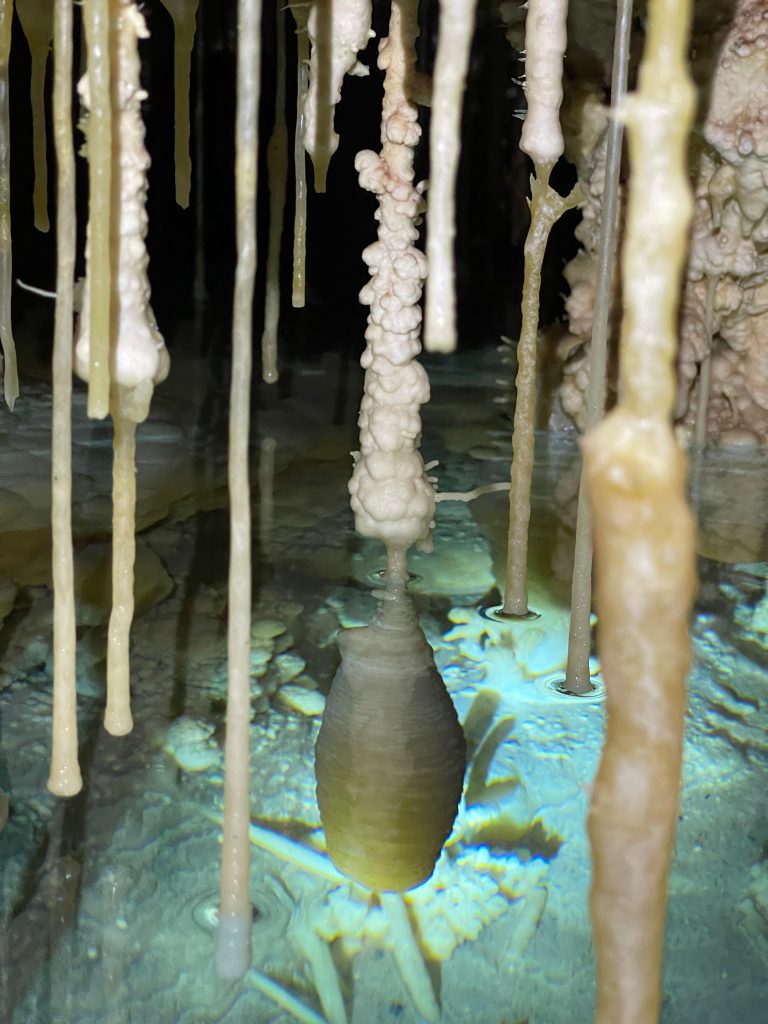
Phreatic overgrowth can be observed on speleothems within the Vallgornera Cave in Mallorca, Spain. Credit: University of South Florida
“If humans continue to be the main driver and the temperature increases 1.5 degrees in the near future, there will be irreversible damage,” Onac said. “There will be no turning back from that point on.”
Based on ice mass loss from the Antarctic and Greenland, the average sea-level rise since 2008 is 1.43 millimeters per year.
Permanent flooding from the rising sea level won’t happen overnight, but Onac says it will be seen more and more during storm surges and hurricanes. With nearly 40 percent of the world’s population living within 62 miles (100 kilometers) of a coast, the rising sea level could be catastrophic with substantial societal and economic impacts.
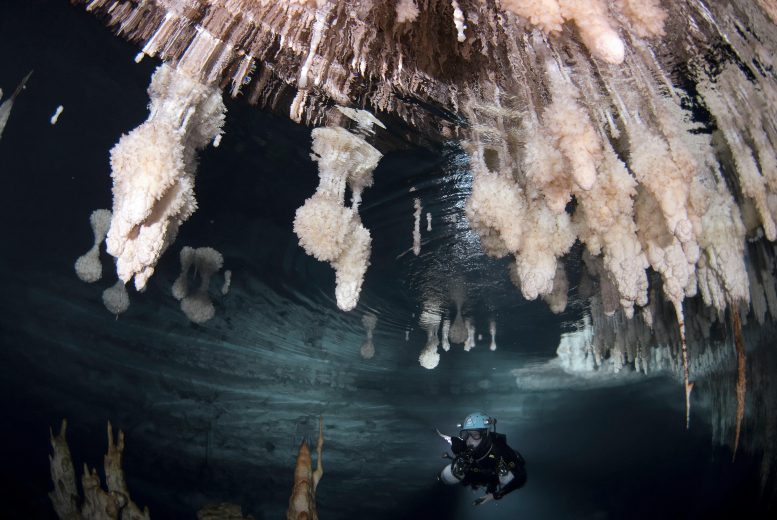
Professional divers were trained to search for phreatic overgrowth on speleothems underwater. Credit: University of South Florida
“Even if we stop right now, sea level will continue to rise for at least a couple of decades, if not centuries, simply because the system is warmed up.”
In June, Onac received a new research grant from the National Science Foundation to continue his research to predict future sea-level rise due to global warming. The grant will allow Onac to expand the research further into history by 130,000 years and create a better understanding of sea level globally. Starting in September, Onac and his team will begin analyzing cave deposits from around the globe, including Italy, Greece, Mexico, and Cuba.
Reference: “Exceptionally stable preindustrial sea level inferred from the western Mediterranean Sea” by Bogdan P. Onac, Jerry X. Mitrovica, Joaquín Ginés, Yemane Asmerom, Victor J. Polyak, Paola Tuccimei, Erica L. Ashe, Joan J. Fornós, Mark J. Hoggard, Sophie Coulson, Angel Ginés, Michele Soligo and Igor M. Villa, 29 June 2022, Science Advances.
DOI: 10.1126/sciadv.abm6185
This study was conducted in collaboration with scientists from Harvard University, University of New Mexico, University of the Balearic Islands, University Rome Tre, Rutgers University, Australian National University, Los Alamos National Laboratory, and the University of Bern.









Be the first to comment on "Evidence of Unprecedented Modern Sea-Level Rise Found in Ancient Caves"